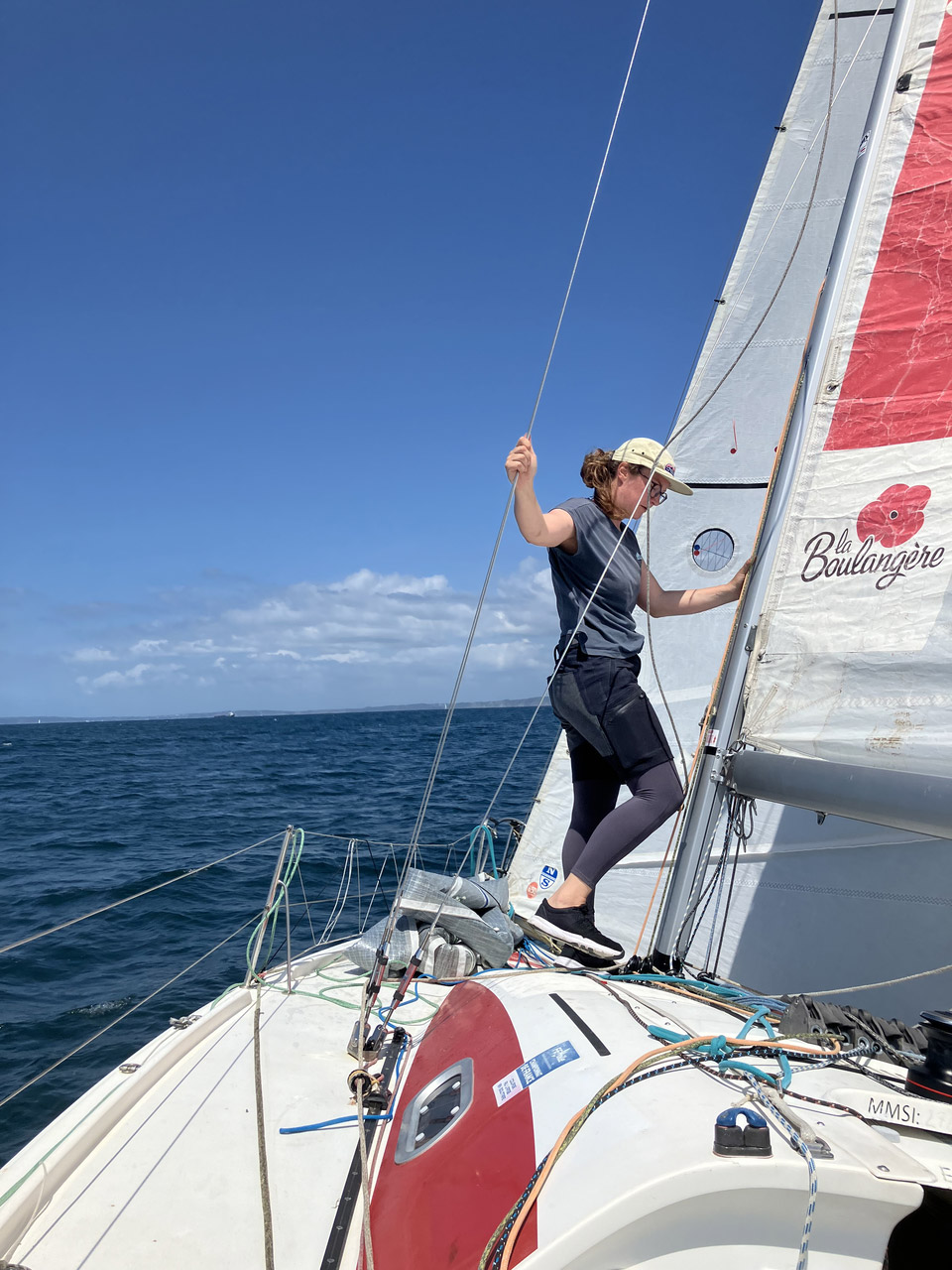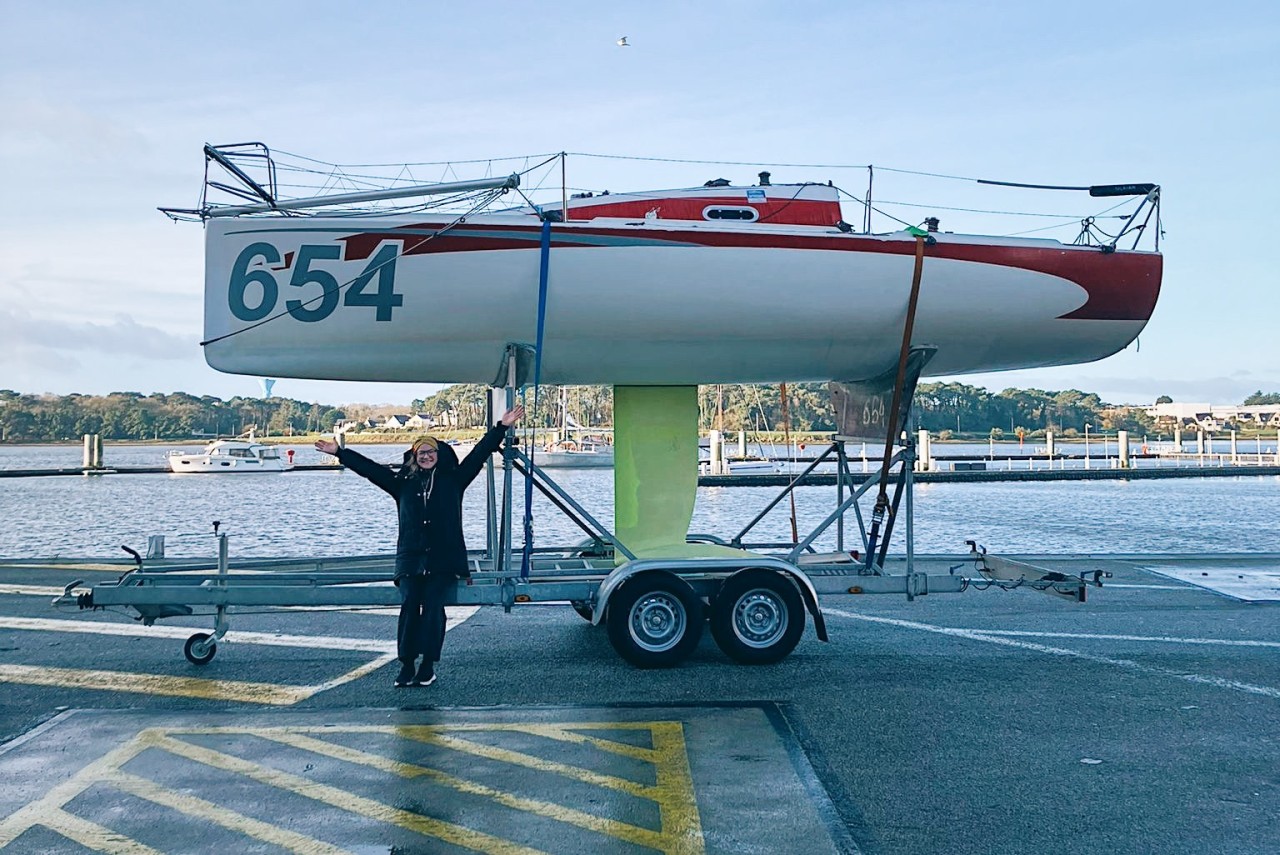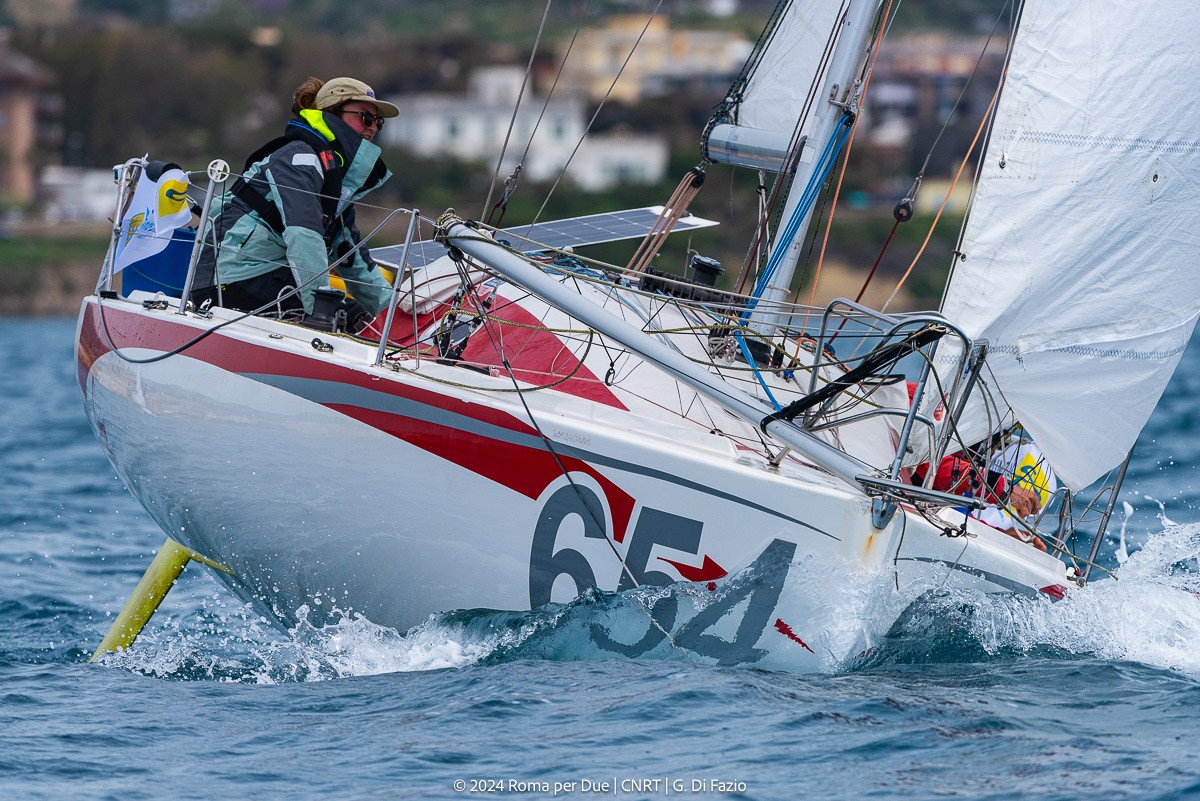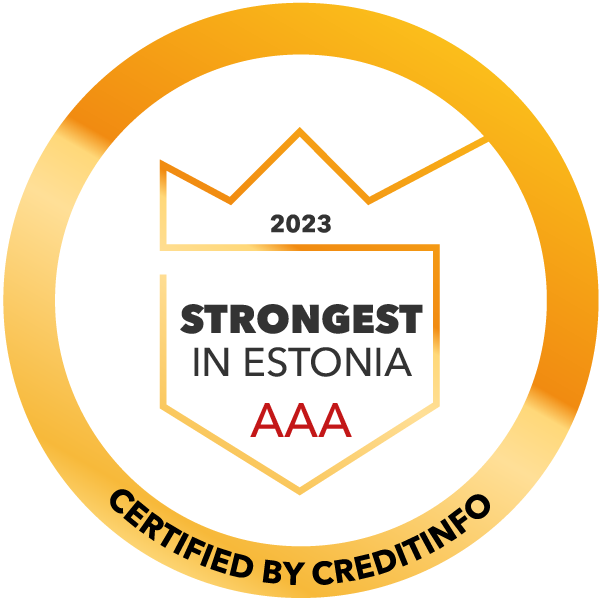L A S I T A
NEWS
Lasita Supports Solo Ocean Sailor Anna-Liisa Talts
Lasita’s two core values – dedication and continuity – are the foundation of everything we do. Under continuity lies sustainability, which is an inseparable part of our strategy. That’s why we’ve always considered it important to support athletes who practice their sport in nature, respecting and preserving the environment.
When Anna-Liisa Talts – Estonia’s first female solo ocean sailor, who has qualified for one of the world’s most prestigious regattas, Mini Transat 2025 – approached us needing new solar panels for her race boat, the decision to support her felt written in the stars. We immediately knew this was a story we simply had to be part of. Now, with the race starting this Saturday, we take a moment to talk to Anna-Liisa and learn more about what she does and why she chose to take on such a wild challenge.
Tell us more – what exactly do you do and what is Mini Transat?
Mini Transat is a race where sailors cross the Atlantic Ocean solo. It starts in France and ends in the Caribbean, and completing it takes about two to three weeks. The competing yachts are 6.5 meters long and must meet the strict safety regulations of the Mini Class. In the world of offshore solo sailing, the Mini Class is comparable to karting in Formula racing – it’s where most careers begin.
In Mini Class races, modern technologies are prohibited – phones, smartwatches, etc., must be handed over to the organizers before the race. Navigation is done using paper charts and a GPS without maps, which only shows the boat’s coordinates and manually entered waypoints. The Mini Class is considered an incubator for offshore sailing, where the most innovative yacht designs and successful solo sailors have emerged.
Just qualifying for Mini Transat is a major challenge, as interest in the race grows year by year. To ensure safety, only 90 solo sailors are allowed to participate, selected based on who has accumulated the most qualification miles over five years of Mini Class races. Additionally, a mandatory 1000-nautical-mile solo sail must be completed, during which various tasks must be performed, such as celestial navigation and weather analysis via radio.
You have to be able to handle a wide range of tasks. Every time at sea is a completely new experience, and you must cope with unforeseen challenges. A solo sailor can’t be a specialist in just one field – it’s essential to have broad knowledge and skills in many areas, whether it’s meteorology, electrical work, repairs, project management, communications, financial planning, or managing energy and nutrition. I’ve always loved learning, and the best way to do that is through solving challenges – something solo sailing never lacks. A solo sailing project is like a company with many departments but only one employee.
Often, the hardest part is on land – when it feels like there are so many problems and the race starts in just a few days – there are moments when it seems impossible. That’s when the uniqueness of the Mini Class community comes into play. We all know how hard it is to carry out such a project, so when help is needed, everyone steps in. And in the end, things get resolved, and reaching the starting line – which seemed impossible just days ago – becomes reality.
How did you get into this? What’s your background?
Actually, my background hasn’t always been connected to sailing – I only got into it more actively as an adult. As a child, I had a lot of contact with the sea – I grew up by the coast, and walking along a stormy beach was always my favorite place to be. At one point, I was lucky enough to spend time on the water – farther from shore – aboard our family’s sailboat. My father discovered a new hobby – sailing – and that’s how the sea, wind, and sailing entered our family’s life. At the time, I didn’t realize that my interest in being at sea was stronger than, say, my sisters’.
Back then, I spent most of my time at the ice rink – I started figure skating at the age of five and trained nearly six times a week under Anna Levandi. It became my second home, and my coach and friends were so important that I never considered switching disciplines.
Later, when I stopped skating, I suddenly had a lot of free time, and without realizing it, I found myself by or on the sea at every opportunity. That’s when I slowly began to understand that I should probably do something with this strong passion. For over ten years, I was involved in organizing sailing competitions, but that wasn’t enough – I wanted to learn everything about competitive sailing more thoroughly.
Eventually, I had the chance to buy a modest cruising sailboat, which allowed me to experience the joys and challenges of boat ownership. With a beginner women’s crew, we participated in a few Muhu Väin races and Wednesday regattas, but my thirst for knowledge grew even stronger – so I started looking for opportunities to learn from the best and joined more professional crews whenever I could.
When did you first dive into solo offshore sailing?
After five seasons with my own boat, I felt I had achieved my goals with it. Then it took several months before a new “feeling” emerged about what role sailing could play in my life.
I’ve always been inspired by books and stories about solo sailors, especially amazing women like Tracy Edwards, Ellen MacArthur, Tania Aebi, and many others. For the first time, I dared to think that maybe solo sailing could be something for me. I called Martin Rääg, a good acquaintance who had experience with solo sailing, just to ask about his experience and what qualities he thought a solo sailor should have. After that conversation, my pulse shot up. Then I called Ülar Mark, who had recently been active in the Mini Class – he explained how things work in that class. Finally, I spoke with Jaanus Tamme, and by then the conversation was already about which boat I should choose. After that, I couldn’t think about anything else for nearly half a year – every day I worked toward starting my journey in the Mini Class.
What inspires you in your work?
The most exciting part of the project for me is learning. Solo sailing is so broad that in a very concentrated time you have to deal with a wide range of tasks. Every time at sea is a completely new experience, and you have to handle unforeseen challenges. A solo sailor can’t be a specialist in just one field – it’s essential to have a broad perspective and skills in many areas, whether it’s meteorology, electrical work, repairs, project management, communications, financial planning, or managing energy and nutrition. I’ve always loved learning, and the best way to do that is through solving challenges – something solo sailing never lacks. A solo sailing project is like a company with many departments but only one employee.
Often, the hardest part is on land – when it feels like there are so many problems and the race starts in just a few days – there are moments when it seems impossible. That’s when the uniqueness of the Mini Class community comes into play. We all know how hard it is to carry out such a project, so when help is needed, everyone steps in. And in the end, things get resolved, and reaching the starting line – which seemed impossible just days ago – becomes reality.
How much sleep do you get during the race, and how do you sleep on the boat?
It depends on the race – if it’s longer than 2–3 days, sleep management becomes more critical. Generally, you always try to sleep whenever possible. Usually, that’s when conditions are most pleasant – steady wind, sunshine, and you’d love to enjoy it – but you have to force yourself to sleep to be ready when the weather turns rough. Also, if you know a tough night is ahead – heavy ship traffic, shifting winds, etc. – you plan to be as rested as possible.
Where and how I sleep on the boat – that could make a funny video. It depends on the situation and conditions. It’s important that the weight is properly distributed in the boat, and then it depends on the wind – how much space I have between sails and water containers, whether things are spread out or all packed in the back of the boat. In the latter case, I pile myself on top and sleep like in a Japanese-style capsule hotel.
During last year’s qualification season, there were races where the autopilot stopped working, so I had to stay outside, and sleep was very limited. In such situations, the hardest part is mental – keeping motivation high to push through to the end.
I can sleep thanks to the autopilot and various alarms, the most important being AIS, which alerts me to nearby ships and warns if a course crosses too closely. I also use alarms for major wind changes – direction or strength – so I can adjust sails or course if needed. But generally, I don’t sleep more than 20 minutes at a time. If everything is fine after 20 minutes, I go for another 20-minute nap, and if conditions are stable, I can “sleep” for several hours in this way. I also use alarms for sudden drops in air pressure and temperature, which signal a major weather change approaching.
Lasita values continuity, and within that, sustainability – is your activity as a solo ocean sailor sustainable for your mind and body? How exhausting is it really?
It depends on how you define sustainability. It’s well known that lack of sleep prevents the brain and body from recovering, so in that sense, it’s definitely not sustainable. But mentally, after a race, the vitality and joy are sky-high, and that energy carries over into every area of life.
Do you generate any waste on the boat – and what do you do with it?
Everything that comes with me to sea also comes back with me. When planning food packs before the race, I try to remove as much packaging as possible, so not much waste is generated in the first place! Also, all electronics run entirely on renewable energy – the main source is the sun. Each boat has 2–3 solar panels (110W each) and a total battery capacity of 200Ah, which usually covers all energy needs.
As a backup, I also have a hydrogenerator, though its downside is its weight and the fact that it slows the boat down. Still, on cloudy days or when the sun is blocked by the sail, the hydrogenerator is a real lifesaver. That’s something I really like about Mini Class boats – they are quite low in energy demand, and sailing is truly environmentally friendly. For example, there’s no need for a diesel generator to power electronics. We don’t have engines either.
Do you encounter ocean waste or garbage patches? Are they dangerous and do you have to consider them when navigating?
Fortunately, I haven’t seen any actual garbage patches, so they haven’t posed a danger. So far, the races have taken place relatively close to shore – in offshore sailing terms – and unfortunately, those are the areas where you do see a lot of trash. It’s disheartening! We’ll see what awaits in the Atlantic Ocean and the Caribbean Sea.
What is your goal for Mini Transat 2025?
My goal is to reach the finish line and feel proud of it. Just qualifying for this race has been such a difficult process that there have been moments when I’ve thought about giving up. But I’ve always managed to pull myself together, made it this far, and now only the race itself remains (which people often say is the easiest part of the project). So I’m definitely proud. One of the things I’ve had to learn as a solo sailor is to give myself credit when I’ve earned it. When sailing alone, it’s easy to spiral mentally, and there’s no one to pull you out of it. If something goes worse than expected, there’s no one else to blame but yourself – and that’s where the spiral begins. That’s probably been one of the biggest challenges for me in racing.
I don’t focus too much on results. Even though race conditions push you to give your best, my racing yacht is from an older generation and simply can’t compete with the newer ones. I chose this type of boat at the beginning of the project because it comes with a significantly smaller budget and is perfect for learning. Even the sailors aiming for top positions are often on their second or third two-year project and are much more experienced in this world. So for me, it’s about the adventure, the learning, and the ability to feel proud of completing the journey.
We wish Anna-Liisa the best of luck and will be cheering her on from home!
You can follow her journey here: https://www.minitransat.fr/






